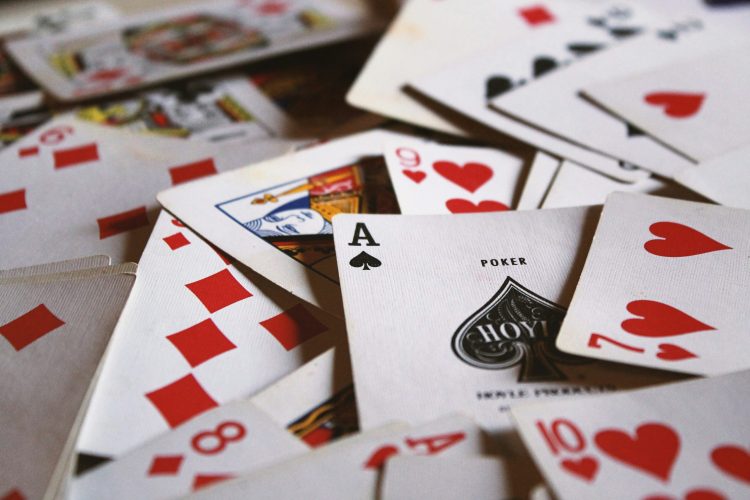Many strategic casino games depend on probability, a concept that all players must understand and master for the best chance of success. While most of these games have different rules, styles of gameplay, and goals, they all rely on some level of probability.
The Role of Probability in Decision-Making From A Bridge and Poker Perspective

The Role of Probability in Decision-Making From A Bridge and Poker Perspective
Many strategic casino games depend on probability, a concept that all players must understand and master for the best chance of success. While most of these games have different rules, styles of gameplay, and goals, they all rely on some level of probability. Games like poker and bridge are no different, as players must learn probability and use it to gain some advantage over opponents. This is the best way to increase the chance of winning a bridge game or acquiring a winning hand when playing poker tournaments on any of the Best Online Poker Sites LTD available to gamblers.
What is Probability?
Probability is simply the likelihood that an event will happen. It is a concept that measures the extent to which an event may or may not occur. A practical analysis of probability is essential in casino games as it helps to make educated decisions instead of random guesses. Probability is generally measured as a number from 0 to 1. While 0 connotes impossibility, 1 is a complete certainty. Therefore, the closer it is to 0, the less likely the event is to happen, while a probability close to 1 indicates a high likelihood of occurrence.
Probability in Poker
Poker is a popular card game with a few different versions. Generally, players get cards dealt to them and then try to assemble the most valuable hand possible. The random nature of the dealing and the cards each player receives highlights the need for players to understand probability. While probability plays into a poker game in several ways, the following are a few.
- Hand Probability
Probability in poker begins with the starting hand, which refers to the cards dealt to each player when the game starts. The specifics and strength of the starting hand play a significant role in determining what gaming strategy to employ and how to implement it. There is also the drawing hand, which is a hand with the potential to win if a draw hits or the right combination of cards is assembled. In general, the probability of getting a specific hand depends on the number of cards in the deck, as well as the cards held.
- Pot Odds
This is the ratio of the current pot size to the cost of a possible call. Calculating pot size helps players determine whether or not a call has a positive expected value depending on potential return. For instance, if the pot is $200 and an opponent bets $25, the total is now $225. If a call costs $25, the pot odds become 225:25, which is 9:1. Simply put, the player is deciding whether to risk $1 for a possible $9 win. Understanding the probability of pot odds helps to make good call choices to manage a player’s deposit or maintain a healthy crypto balance when playing crypto poker at a supported casino.
- Bluffing
Probability is also essential when bluffing. Betting or raising with a weak hand to confuse opponents may require a measured approach despite experience level. Experienced players can analyze a familiar opponent’s betting patterns and past actions to make an educated decision on a bluff based on the probability that the opponent is holding a particular hand. However, the frequency of bluffs should be measured, as players who bluff too often risk exposing their gameplay.
Probability in Bridge
Bridge requires players to win as many tricks as possible by playing cards with values higher than their opponents’. The game demands good communication and strategic teamwork to increase the chance of winning. In addition to these factors, the best players must also understand probability and how to use it to their advantage in the following ways.
- Bidding Phase – Hand Evaluation
The game comprises several phases. One of them is the bidding phase, where players take turns to specify the number of tricks their partnership needs to win. Players also communicate details of their hands to their partners. Probability is crucial here because all players must try to deduce the likely distribution of cards based on bids made. If probability indicates a partner has a strong hand, players can assume their combined strength can equal to high-level contracts and bid accordingly. Conversely, if the bidding around the table indicates the opponents have the balance of points and high cards, the probabilities might indicate anything from a pre-emptive action, a sacrifice or a pass.
A simple example of probability in bidding, and one learned by all beginning players, uses High Card Point count. We’re taught to assign a value to our cards (A=4, K=3, Q=3, J=1) and to our distribution (void=3, singleton =2) and then we learn that with a combined total of 26 or more, partner and I have a high probability of making a game contract and with a combined total of 30 or more, we might even be able to make a slam contract.
This analysis of probabilities during the bidding phase is called Hand Evaluation.
- Play Phase
In the play phase, one pair of partners tries to fulfill the contract while the other tries to stop them. Here, players can use probability to estimate suit distribution in their opponents’ hands. In addition, defenders must understand probability to determine whether or not the declarer’s decisions can be used to gain insight into what hand they are holding.
Successful bridge play is always about card distribution. A low value hand might make a high contract successfully if the cards are distributed favourably. Plays such as finesses and bids such as splinters help players determine their odds for success. Experienced players have an indepth understanding of card distribution and percentage plays. This chart on Bridge Hands will give you an idea of what we mean here.
Probability in Bridge Vs Poker
The application of probability differs between both games. For instance, card information is more hidden in poker as all players keep their hands concealed. This means players may rely more on probabilistic thinking here because available information is inadequate. For bridge, players can be more precise with planning because more details are available via the bidding process.
Another difference is the manner in which probability is applied. Since bridge is more cooperative, players can brainstorm, communicate (through bidding, and then through play of the cards), and execute joint gameplay for a better shot at winning. On the other hand, probability, strategy, and planning with poker are more personal and require psychological insights and a high level of individual adaptation.
Conclusion: Probability in Gaming
Bridge and poker require some level of probabilistic thinking to create strategies and manage risks to increase the likelihood of a win. This is true despite the fact that the games have significant differences in structure, gameplay, and data availability. However, the best players are those who have mastered this type of reasoning, coupled with experience gathered over time. Fortunately, this style of reasoning helps players develop skills they can use even outside of gaming in any sector that requires enhanced decision-making, including business and finance.








